Ceiba Tree: Sacred Tree Of Life Of Maya People And Universal Concept In Ancient Beliefs
A. Sutherland - AncientPages.com - Most civilizations of Mesoamerica have an old belief in the power of the “ceiba” tree. Mixtec, Aztec, Maya, and other cultures consider this tree – sacred.
Tree of Life, Izapa Stela 5. Image credit: James Q. Jacobs - CC BY-SA 3.0 -
The ceiba is a gigantic Tree of Life in Maya religion and cosmology and the point of beginning where the world came into existence. It grew deep into the underworld; its branches reached upwards towards the heavens and supported it.
The Tree of Life, with its roots and branches, is a powerful worldwide symbol. It connects the earth and the sky and symbolizes strength, wisdom, protection, wealth, and beauty.
The tree has become a symbol of immortality since it gives fruit and seeds, which create new trees and new life.
In ancient Urartu, the tree of life had a an important place in beliefs of people. It was a religious symbol and was displayed on walls of fortresses and carved on the armor of warriors.
The branches of the tree were equally divided on the right and left sides of the stem, with each branch having one leaf, and one leaf on the apex of this sacred tree. Servants stood on each side of the tree with one of their hands up as if they are taking care of the tree. (Above image shows the Urartian tree of life - Urartu Helmet fragment. Public Domain)
The world of the Maya is composed of three levels - a nine-layered underworld (Xibalba), a middle world inhabited by humans, and a heavenly upper realm, supported by four Atlantean gods, the Bacabs.
Connecting these three levels was the Axis Mundi, a great and sacred Ceiba Tree, along which both the souls of the dead and the gods could travel. They used this “road” to make their journeys between the levels of the universe.
According to the Holy Bible, God placed the Tree of Knowledge of Good and Evil and the Tree of Life in the midst of the Garden of Eden.
Ceiba Tree: - Image credit: Atamari - CC BY-SA 3.0 DEED
In Genesis 2:9, we read that “… out of the ground the Lord God made every tree grow that is pleasant to the sight and good for food. The tree of life was also in the midst of the garden and the tree of the knowledge of good and evil…”
Also, other parts of the Bible mention the Tree of Life. In Revelation 22:2 and in Ezekiel 47:12 we find trees whose "fruit will be for food and their leaves for healing".
Celtic Druids of ancient times believed that the Tree of Life had special powers. When the Druids created a new settlement, they removed all the trees except one that was growing in the middle. This tree became a symbol of the Tree of Life.
Also, the Mayans’ ceiba tree is placed in the center of many modern villages because the Maya say that “ceiba” in their language means “Ya’ax Ché” - center. The tree passes through each layer of existence, the heaven, the earth, and the Xibalba, the name of the underworld in K'iche' Maya mythology.
In Norse mythology, the Tree of Life is named Yggdrasil. The Norse concept is slightly different. Yggdrasil is sacred and eternal. It has three roots, and each one reaches a different, mysterious world.
Ancient Egyptians also had their mythical Tree of Life, and they believed that the first Egyptian gods were born beneath this tree. Also, life and death were enclosed in this tree.
 The tree in the center of the image is identified as a Mesoamerican Tree of Life, connecting the heavens and the underworld below. Early Photograph of Izapa Stela 5, 1976, V. Garth Norman (Image source).
The tree in the center of the image is identified as a Mesoamerican Tree of Life, connecting the heavens and the underworld below. Early Photograph of Izapa Stela 5, 1976, V. Garth Norman (Image source).
However, the Tree of Life is a universal concept and was adopted by religions and cosmologies of many cultures around the world. These cultures have specific trees that are objects of worship as they are associated with gods and myths.
They are sacred, and it is forbidden to cut them. The custom of offering libations to them is still maintained among many cultures.
Written by A. Sutherland – AncientPages.com Staff Writer
Updated on February 6, 2024
Copyright © AncientPages.com. All rights reserved. This material may not be published, broadcast, rewritten or redistributed in whole or part without the express written permission of AncientPages.com
Expand for referencesReferences:
Hand Clow B, The Mayan Code: Time Acceleration and Awakening the World Mind
Haberman L. People Trees: Worship of Trees in Northern India
More From Ancient Pages
-
 Rare Ancient Human Footprints Found On Gower Peninsula, Wales Are 7,000 Years Old
Archaeology | Mar 8, 2017
Rare Ancient Human Footprints Found On Gower Peninsula, Wales Are 7,000 Years Old
Archaeology | Mar 8, 2017 -
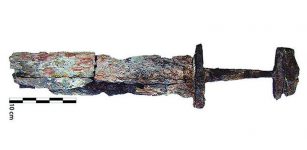 Viking Sword Found In Patara May Have Belonged To A Varangian Guard
Archaeology | Nov 22, 2018
Viking Sword Found In Patara May Have Belonged To A Varangian Guard
Archaeology | Nov 22, 2018 -
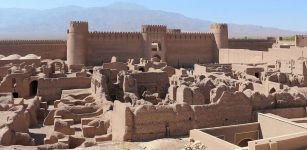 Graves Dated To Achaemenid Or Parthian Empire – Found In Iran
Archaeology | Aug 15, 2018
Graves Dated To Achaemenid Or Parthian Empire – Found In Iran
Archaeology | Aug 15, 2018 -
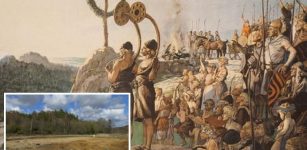 82 Mysterious 3,000-Year-Old Pits Discovered In Sweden – Bronze Age Cooking Pits And Ancient Ceremonial Center?
Archaeology | Jun 13, 2017
82 Mysterious 3,000-Year-Old Pits Discovered In Sweden – Bronze Age Cooking Pits And Ancient Ceremonial Center?
Archaeology | Jun 13, 2017 -
 Secrets Of The Chephren Pyramid And Its Unknown Mysterious Force
Ancient Mysteries | Mar 20, 2015
Secrets Of The Chephren Pyramid And Its Unknown Mysterious Force
Ancient Mysteries | Mar 20, 2015 -
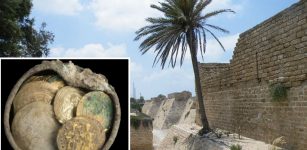 Rare Gold Coins And Treasures Linked To Crusaders’ Conquest Of Caesarea – Discovered
Archaeology | Dec 4, 2018
Rare Gold Coins And Treasures Linked To Crusaders’ Conquest Of Caesarea – Discovered
Archaeology | Dec 4, 2018 -
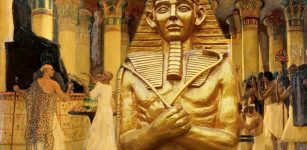 Harem Conspiracy – Plot To Murder Ramesses III, The Last Great Warrior Pharaoh
Featured Stories | Mar 24, 2018
Harem Conspiracy – Plot To Murder Ramesses III, The Last Great Warrior Pharaoh
Featured Stories | Mar 24, 2018 -
 Does Palenque Mask Depict Mayan Ruler Pakal? New Discovery At Palenque
Archaeology | Aug 27, 2018
Does Palenque Mask Depict Mayan Ruler Pakal? New Discovery At Palenque
Archaeology | Aug 27, 2018 -
 Magnificent Ancient Artifacts Found In Bulgaria Last Year Go On Display
Archaeology | Feb 14, 2023
Magnificent Ancient Artifacts Found In Bulgaria Last Year Go On Display
Archaeology | Feb 14, 2023 -
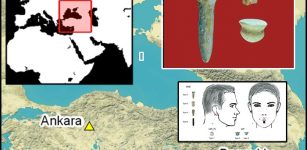 Evidence Of Stone Age Ear and Lip Piercing Found At Boncuklu Tarla Neolithic Site In Türkiye
Archaeology | Mar 14, 2024
Evidence Of Stone Age Ear and Lip Piercing Found At Boncuklu Tarla Neolithic Site In Türkiye
Archaeology | Mar 14, 2024 -
 Ancient Nomads You’ve Probably Never Heard Of Disappeared From Europe 1,000 Years ago. Now, DNA Analysis Reveals How They Lived
Featured Stories | Jun 20, 2024
Ancient Nomads You’ve Probably Never Heard Of Disappeared From Europe 1,000 Years ago. Now, DNA Analysis Reveals How They Lived
Featured Stories | Jun 20, 2024 -
 Ancient Secrets Of Rare Maps Of Judah Ben Zara Revealed
Artifacts | Sep 20, 2022
Ancient Secrets Of Rare Maps Of Judah Ben Zara Revealed
Artifacts | Sep 20, 2022 -
 Ancient History Of Chinese Swords
Featured Stories | Aug 20, 2018
Ancient History Of Chinese Swords
Featured Stories | Aug 20, 2018 -
 Graves Of Celtic Princes Reveal How Powerful Women Were In Pre-Roman Germany
Archaeology | Jun 4, 2024
Graves Of Celtic Princes Reveal How Powerful Women Were In Pre-Roman Germany
Archaeology | Jun 4, 2024 -
 Controversial ‘Anomaly’ Discovered On Mount Ebal Could Be Biblical Joshua’s Altar
Biblical Mysteries | Apr 6, 2020
Controversial ‘Anomaly’ Discovered On Mount Ebal Could Be Biblical Joshua’s Altar
Biblical Mysteries | Apr 6, 2020 -
 On This Day In History: Ferdinand Magellan Discovers Guam – On Mar 6, 1521
News | Mar 6, 2017
On This Day In History: Ferdinand Magellan Discovers Guam – On Mar 6, 1521
News | Mar 6, 2017 -
 On This Day In History: Richard The Lionheart Arrives To The Holy Land – On June 8, 1191
News | Jun 8, 2016
On This Day In History: Richard The Lionheart Arrives To The Holy Land – On June 8, 1191
News | Jun 8, 2016 -
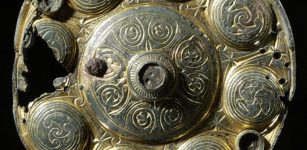 Viking’s Symbols Of Travels Prestige And Adventure Were Imported From Abroad
Ancient Symbols | Oct 1, 2015
Viking’s Symbols Of Travels Prestige And Adventure Were Imported From Abroad
Ancient Symbols | Oct 1, 2015 -
 On This Day In History: Papal Bull Issued To Arrest All Knights Templar And Seize Their Lands – On 22 Nov, 1307
News | Nov 22, 2016
On This Day In History: Papal Bull Issued To Arrest All Knights Templar And Seize Their Lands – On 22 Nov, 1307
News | Nov 22, 2016 -
 Olduvai Gorge: Direct Cosmogenic Nuclide Dating Of Olduvai Lithic Industry
News | Mar 31, 2022
Olduvai Gorge: Direct Cosmogenic Nuclide Dating Of Olduvai Lithic Industry
News | Mar 31, 2022



